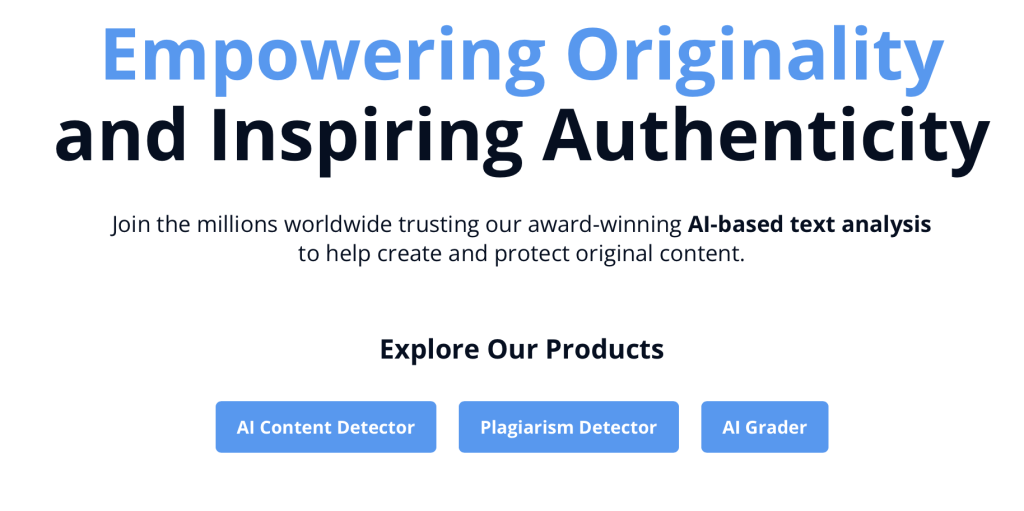Whether you’re a writer looking for established outlets to spread your word or you’re a guest blogger looking to promote your brand and get traffic, you can get paid to write articles.
Many sites will pay you to contribute content, while still allowing you to have a bio and retain a link to your site – but very few sites will pay you really well.
Tip: Jeff uses BuzzSumo to generate content ideas, create high-performing content, monitor its performance, and identify influencers.
Listed below are 20 sites that will pay you at least $100 per article, upon acceptance or publication, and most will allow a bio with a link back to your site.
Here we go:
BONUS: Want to use your writing skills to earn a side income? Join the Side Hustle Strategies Membership Community to get the inspiration, resources, and community to start and grow your side hustle.
Sites where you can get paid to write articles:
Fiverr is a freelance marketplace where you can get paid to write articles by creating a “Gig” and becoming a seller.
A gig is purchased every 4 seconds on Fiverr, with freelancers and experts making anywhere from $5 to $15,000+ per project.
The best writers on Fiverr easily make more than $100 per article, so if that’s what you’re after, it’s a great place to start.
Niche: Mental Health/Relationships/Getting Healthier
Amount: $125+
Payment Method: Unspecified
Greatist is a blog focused on relationships, mental health, and life as it affects 20- and 30-somethings.
They are looking for articles about mental health, relationships, and getting healthier. Greatist also accepts career-related articles (especially when it comes to achieving work/life balance and being more productive), struggles with substance abuse, and social media/technology.
They expect articles to be between 1,000 – 1,500 words and pay at least $125 for each article they accept.
Niche: Anything
Amount: $250 – $1,500+
Payment Method: Unspecified
Longreads is looking for well-written, well-told, and easy to follow stories that illustrate relatable human experience that their readers can identify with.
They want blog posts, reading lists, short interviews, personal essays, memoirs, critical essays, book reviews, investigative projects, and long-form journalism.
Depending on what category your submission falls into, it can be between 800 to 6,000 words. They pay a minimum of $250 and up to $1,500+ per article.
Niche: General
Amount: $100
Payment Method: Paypal
Listverse is possibly the foremost authority when it comes to lists online, and they boast an audience of over 15 million readers a month.
They are looking for unique lists of 10 items, usually at least 1,500 words, and they pay $100 upon acceptance of your list.
Niche: Copywriting/Startups/Marketing/Freelancing
Amount: $325
Payment Method: Paypal
Copyhackers is interested in practical content for startups, marketers, freelancers, and designers.
They are looking for articles that discuss topics that include launching and growing a business, freelancing for lifestyle/money, conversion copywriting, UX and A/B testing, product design, persuasion, and psychology, etc.
Copyhackers expect articles to be in-depth and thoroughly researched. They rarely accept articles less than 2,000 words and want articles to feature a first-person story/account.
They pay $325 per article.
Niche: Photoshop/Design
Amount: $25 – $300
Payment Method: Paypal
They are looking for tutorials related to Photoshop, and they pay anything from $50 to $300 per accepted article depending on whether you submit a “quick tip” or a full tutorial.
Niche: Policy/Foreign Policy
Amount: $100
Payment Method: Paypal
Informed Comment is a leading publication about policy and foreign policy. They are looking for articles that can contribute to policy decisions and foreign policy.
Informed Comment is particularly interested in content focused on US foreign policy as well as Middle Eastern and South Asian politics. They also want content that addresses religion, human rights, women’s rights, workers’ rights, religious discrimination, energy, and climate change.
They expect pieces to be between 800 – 1,000 words and pay $100 per accepted piece.
Niche: Travel
Amount: $50 – $200
Payment Method: Unspecified
They are looking for articles about the business of getting paid to travel, whether this is through writing, photography, tours or other means.
They pay $50 – $200 per article depending on the type of article.
Niche: Feminism
Amount: $150 – $1,000
Payment Method: Unspecified
Bitch Media is looking for feminism pieces that are well-researched and backed up with evidence and statistics.
They want articles to be discussion-provoking and to make a connection between the writer’s personal experience and larger social forces; they want articles to be a feminist response to pop culture. Articles can be around 1,200 – 3,000 words.
They pay between $150 to $1,000 per article depending on what category your article falls into.
Niche: User Experience
Amount: $100
Payment Method: Unspecified
UX Booth is an authority when it comes to User Experience, and they are looking for research-backed articles on how to create better user experience.
They prefer articles to be in the 1,200 – 1,800 words range.
Niche: General/Humor
Amount: $50 – $200
Payment Method: Paypal
Cracked is looking for funny and clever articles, mainly in list format, and they pay $50 – $200 per article depending on the type of article.
Niche: Web Development
Amount: $100 – $250
Payment Method: Unspecified
They are looking for articles on anything related to web development; this could be PHP, HTML5, CSS3 or anything in between.
They pay $100 for a “quick tip” tutorial and $250 for a regular tutorial.
Niche: Design/Coding/User Experience
Amount: $50 – $200
Payment Method: Unspecified
Smashing Magazine is looking for articles related to web design, graphics design, UX design, WordPress or mobile, and they pay $50 – $200 per article.
Niche: Internet
Amount: $200
Payment Method: Unspecified
They accept articles about coding, design, content strategy, user experience and basically internet industry/business.
They prefer articles to be between 1,500 to 2,000 words and they pay $200 per article within a month of publication.
Niche: Web Design/Web Development
Amount: $150
Payment Method: Unspecified
Scotch is looking for articles about web design and development. Articles can be about React, JavaScript, Node, Laravel, Angular, Python, Vue, CSS, and other web development related topics.
They pay $150 per article.
Niche: Parenting
Amount: $35 – $350
Payment Method: Check
Metro Parent is a leading parenting publication looking for parenting articles. They pay $35 – $350 per article and they want features to be within 1,000 – 2,500 words.
Metro Parent has a preference for articles from local freelance writers in the following communities: Livingston, Macomb, Oakland, Washtenaw and Wayne Counties.
They pay via Check upon publication of your article, within the first week of the month of publication.
Niche: Living Overseas
Amount: $250 – $400
Payment Method:
International Living is a publication focusing on living and retiring overseas, and they are looking for articles about living and retiring overseas.
They pay $250 for 840 words, and $400 for 1,400 words. They also pay $50 for one-tine use of your photographs, and they pay upon publication of your article.
Niche: Web Development
Amount: $150 – $200
Payment Method: Unspecified
Sitepoint is an authority when it comes to web development, and they are looking for in-depth articles about HTML, CSS and SASS.
They pay $150 for articles and $200 for tutorials, and they often pay more for articles that are more comprehensive and that they feel will do well traffic-wise.
Niche: Linux
Amount: $50 – $200
Payment Method: Paypal
Digital Ocean is looking for beautifully-written tutorials about Linux and FreeBSD cloud hosting and, besides potentially gaining exposure to their millions of readers, you can also make up to $200 per article.
Your article can come in form of Updates, Simple Tutorials and In-Depth Tutorials, and you can earn $50, $100 or $200 respectively depending on what category it falls into.
Niche: Vector
Amount: $50 – $200
Payment Method: Unspecified
Tuts+ Vector is looking for articles related to Adobe Illustrator, Adobe InDesign, CorelDRAW and other vector-related tutorials.
They pay $50 – $200 depending on the nature of your contribution.
Niche: Finance
Amount: Up to $75
Payment Method: Paypal
The Penny Hoarder is a leading personal finance publication, and they are looking for articles mostly based on personal experience. Especially ones containing detailed numbers, strategies and advice about saving or earning money.
They prefer articles to be 700 – 900 words, and they pay up to $75 per article depending on a lot of factors; you might need to reach out to their editor first to discuss payment.
Bonus: 50 Websites that Pay You to Write [PDF]
Do you love the above list? Awesome. There’s more where it came from.
As a bonus to Jeff Bullas’ readers, you can also get my report featuring a total of 50 websites that pay writers, most of which pay more than $50 per article, for free.
The report features websites in more than a dozen categories and contains all the information you need to pitch these sites and get paid to write articles for them. If you’re a writer looking to get paid for your content, this list is invaluable.
Get paid to write articles by downloading the PDF below:
Download the PDF List
Guest author: Bamidele Onibalusi is a world-renowned blogger and freelance writer. Huffington Post calls him an “ultimate business success story” and he’s been featured in Forbes and Digital Journal amongst others. He blogs at Writers in Charge.
The post Get Paid to Write Articles: 21 Amazing Sites That Will Pay You $100+ Per Article [2023 Update] appeared first on Jeffbullas's Blog.
source
https://www.jeffbullas.com/20-amazing-sites-that-will-pay-you-100-per-article/















































